|
Centrip Editorial Board
Exploring the Tsumago-juku of Nakasendo and the Fujimi-dai Kogen Hiking Trail

Achi Village in Nagano Prefecture is a popular destination for its stunning starry skies and breathtaking views. One of the highlights is the Tenku no Rakuen Night Tour visitors love. This article will share a suggested itinerary for exploring Achi Village. On the first day, you can stay at Hirugami Onsen and visit Tsumago-juku, a traditional post town with charming old streets along the Nakasendo trail. The second day offers a chance to visit the beautiful Fujimi-dai Kogen (highlands), which has an easy hiking trail perfect for beginners.
Table of Contents:
Tsumago-juku on the Nakasendo, known for strict preservation rules.
For those with an interest in Japanese history, the Kisoji route, famously known as the Samurai Road, might have caught your attention. It forms part of the Nakasendo, a vital highway during the Edo period connecting Edo (Tokyo) and Kyoto. The Kisoji, in particular, is renowned for its rugged and remote sections, offering a glimpse into the past.
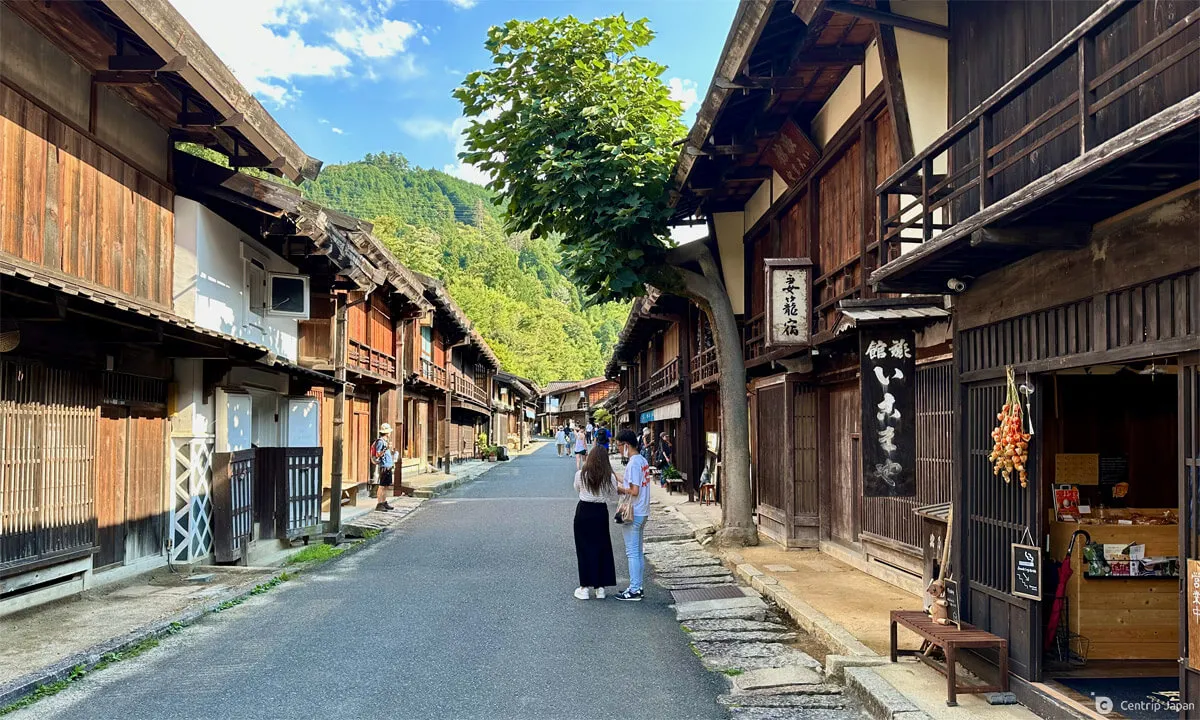 The Streets of Tsumago-juku: A Glimpse into the Edo Period
The Streets of Tsumago-juku: A Glimpse into the Edo Period
Our visit takes us to Tsumago-juku, one of the post towns along the Kisoji route, nestled in Nagiso-cho, adjacent to Achi Village. Thanks to dedicated preservation efforts and stringent self-regulation by the local community, Tsumago-juku retains its original charm, showcasing beautifully preserved streets from the Edo period, transporting visitors to a bygone era.
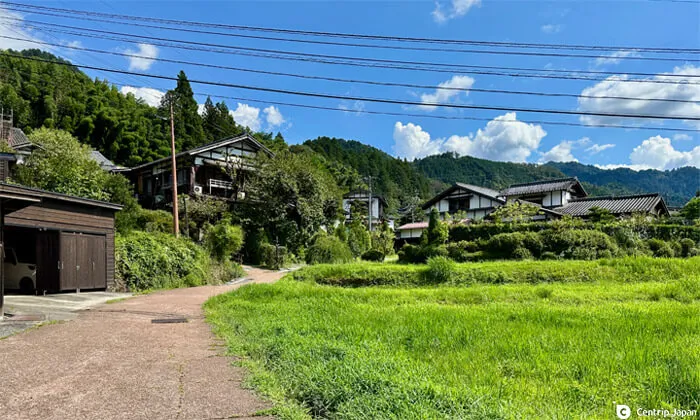 A serene countryside view awaits
A serene countryside view awaits
 Passing through narrow streets
Passing through narrow streets
A serene countryside vista unfolds before your eyes, as you venture through meandering narrow alleyways, fascinating post-town rooftops, and the majestic mountains beyond. Tsumago-juku offers a truly extraordinary experience, evoking a sense of stepping back in time to Japan's Edo period. If you take your time to leisurely explore the area it should take around 2-3 hours.
 The efforts of its residents help preserve the scenic beauty
The efforts of its residents help preserve the scenic beauty
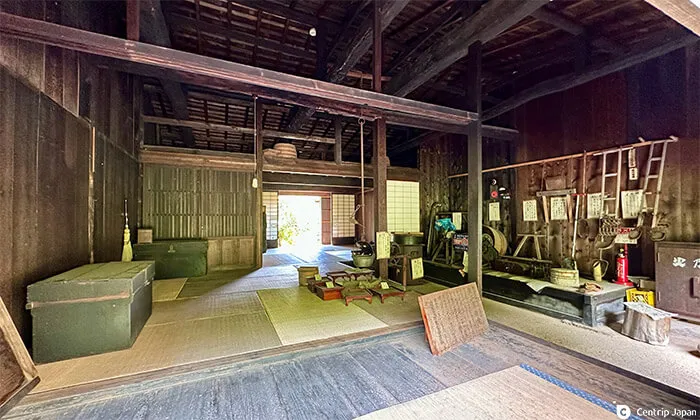 Edo period lifestyle at the Kumagai Family Residence
Edo period lifestyle at the Kumagai Family Residence
Along the streets, you'll encounter an array of delights, from the famous gohei mochi (rice cake on a skewer with savory sauce) and chestnut sweets to a variety of souvenirs. The charmingly preserved buildings house restaurants where you can savor local cuisine and indulge in delectable soba noodles.
Additionally, if you make a reservation in advance, you can also arrange for a guide from the Tsumago-juku Information Center. Over 1-2 hours, they will provide clear explanations of the main attractions within the post town. It's worth considering reaching out to them for inquiries (please note that their primary language of communication is Japanese).
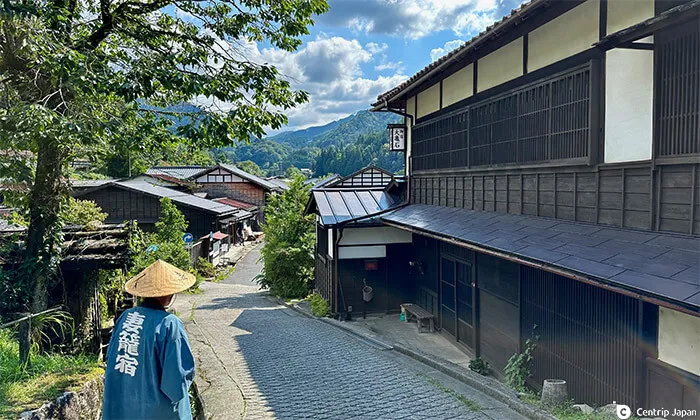 A Guide from the Tsumago-juku Information Center
A Guide from the Tsumago-juku Information Center
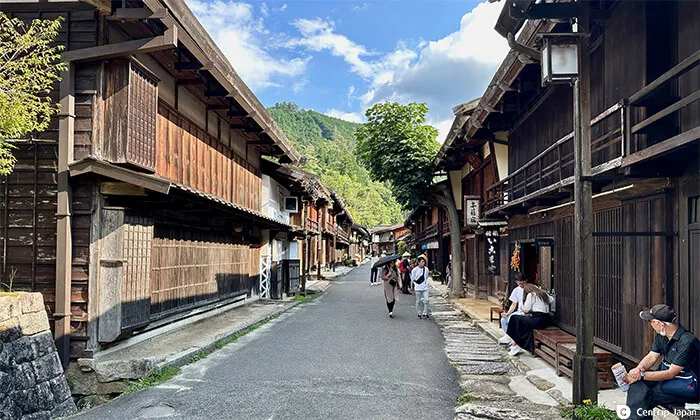 The post town is surrounded by picturesque green mountains.
The post town is surrounded by picturesque green mountains.
When exploring Tsumago-juku, Waki Honjin Okuya is a must-visit. Constructed in 1877, Waki Honjin Okuya is now recognized as an Important Cultural Property by the government. It showcases lavish wooden architecture, with the use of cypress, a material that was once restricted during the Edo period.
 Entrance to Waki Honjin Okuya
Entrance to Waki Honjin Okuya
Waki Honjin Okuya represents a prestigious inn in Tsumago-juku and was used as a resting place for Emperor Meiji during his procession in 1880. A proud stone monument stands beside the entrance, commemorating this historical event.
 Waki Honjin Okuya's interior features a famous hearth, a beloved spot for
photography
Waki Honjin Okuya's interior features a famous hearth, a beloved spot for
photography
Upon entering, you will find an intact hearth in its original form as you step up from the earthen floor. In the past, specific seating arrangements were designated around the hearth for the head of the household, the eldest son, guests, children other than the eldest son, and women. During winter, the hearth's front window allows enchanting rays of light to illuminate the surroundings, creating a magical ambiance.
 History Museum
History Museum
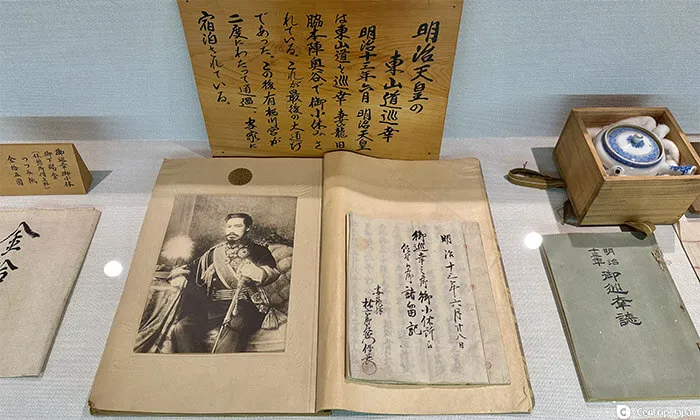 Preserved records of Emperor Meiji's procession
Preserved records of Emperor Meiji's procession
Three buildings, Waki Honjin Okuya, along with the nearby history museum, and across from it, the Honjin (a restored building from 1995), make up the Nagiso Town Museum. We encourage you to visit all three establishments (a combined ticket costs ¥700 for adults).
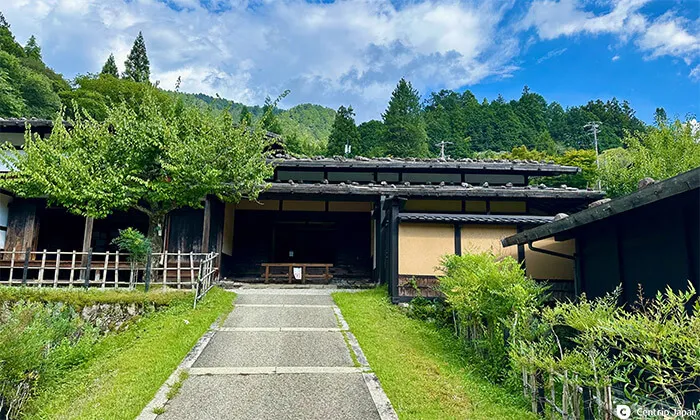 The only Honjin in Tsumago-juku
The only Honjin in Tsumago-juku
 Within Tsumago-juku, a popular inn to visit is the Fujioto Ryokan. They also serve
lunch.
Within Tsumago-juku, a popular inn to visit is the Fujioto Ryokan. They also serve
lunch.
Directions from Nagoya to Tsumago-juku
If you're traveling by car from Nagoya to Tsumago-juku, it takes approximately 60 minutes from Nagoya to Nakatsugawa IC on the Chuo Expressway, and an additional 30 minutes from Nakatsugawa IC to Tsumago-juku. If you prefer public transportation, you can disembark at JR Nagiso Station and then take a bus or taxi for about 10 minutes.
In addition to Tsumago-juku, it's highly recommended to visit Magome-juku(related article here), another renowned post town along the Kisoji route. You can embark on a scenic hike of approximately 9 kilometers, following the mountain pass of the old Nakasendo trail from Magome-juku, which takes about 3 hours to reach Tsumago-juku(related article here).
Hirugami Onsen & Tenku no Rakuen Night Tour
After leaving Tsumago-juku, our next destination is Hirugami Onsen. It takes approximately 40 minutes to reach Hirugami Onsen from Tsumago-juku by traveling along National Route 256. During the peak tourist season, there are regular sightseeing buses available as well.
For more information on how to make the most of your time at Hirugami Onsen and the Tenku no Rakuen Night please refer to this article.
Casual and Scenic Hiking at Fujimi-dai Kogen (highlands)
After immersing yourself in Japan's rich history at Tsumago-juku, why not indulge in the beauty of nature?
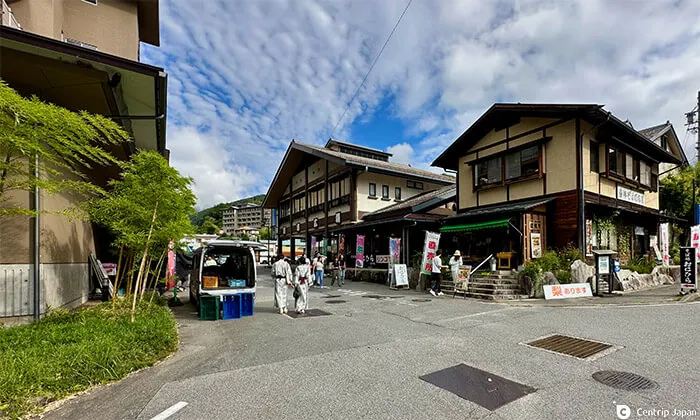 The area around the morning market is bustling with tourists dressed in yukata.
The area around the morning market is bustling with tourists dressed in yukata.
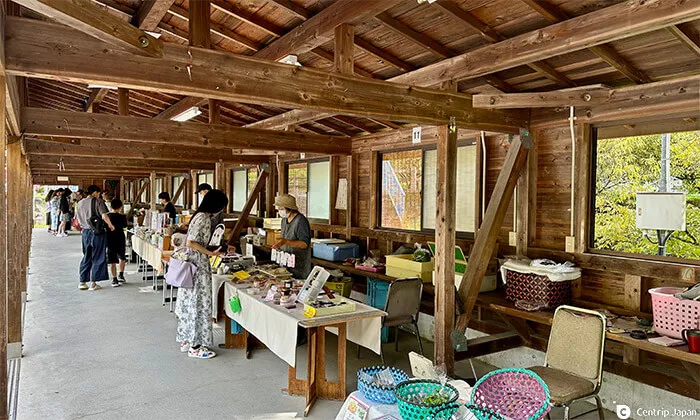 Various items are sold, including sweets, vegetables, and crafts.
Various items are sold, including sweets, vegetables, and crafts.
After exploring the lively morning market in Hirugami Onsen, where tourists dressed in yukata fill the streets, we head to Heavens Sonohara, which serves as a middle point on the way to Fujimi-dai Kogen. At night right the ropeway at Heavens Sonohara for a star-filled night sky and in the daytime it is surrounded by the beauty of terrestrial nature.
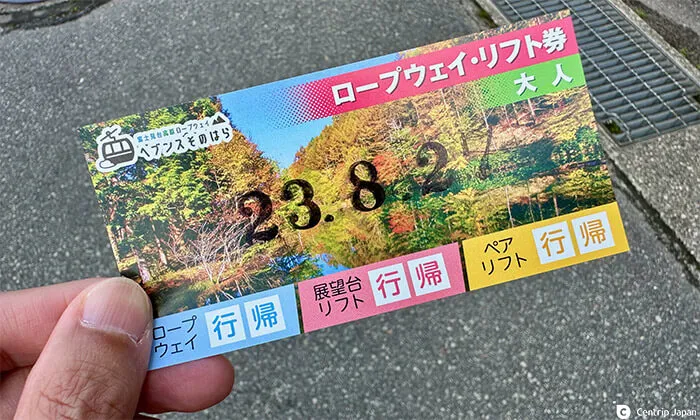 You can purchase a combined ticket for the ropeway and lift (¥3,500 for adults.)
You can purchase a combined ticket for the ropeway and lift (¥3,500 for adults.)
 Breathtaking views of the surrounding mountains from the ropeway.
Breathtaking views of the surrounding mountains from the ropeway.
The goal is to Fujimi-dai Kogen, which sits at an elevation of 1,739 meters. While there are multiple hiking routes available to reach the highlands, using the ropeway and lift at Heavens Sonohara allows even beginners and families with young children to enjoy a leisurely hike.
Now, let's set off right away!
 Once you step off the ropeway, you'll immediately notice the first boarding area.
Once you step off the ropeway, you'll immediately notice the first boarding area.
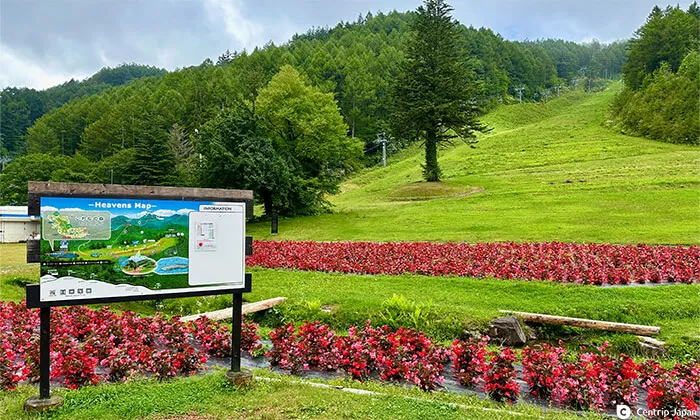 The midway point of the lift is adorned with a colorful array of flowers.
The midway point of the lift is adorned with a colorful array of flowers.
First, take the ropeway for approximately 15 minutes, ascending from 800 meters to 1,400 meters in elevation. Afterward, transfer to two lifts to reach around 1,600 meters. Upon disembarking from the second lift, board the Highland Bus to make your way to the Bangakuso (mountain lodge).
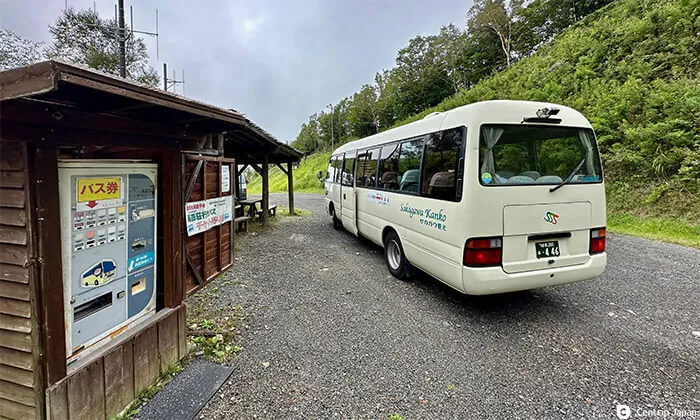 As soon as you alight from the lift, you'll find the bus stop.
As soon as you alight from the lift, you'll find the bus stop.
 The bus stop timetable.
The bus stop timetable.
Please note that the fare for the Highland Bus is not included in the ropeway and lift ticket, and you'll need to purchase it separately using cash from the vending machine (round trip costs ¥800). The bus stop also provides the latest timetable, so make sure to check the return schedule.
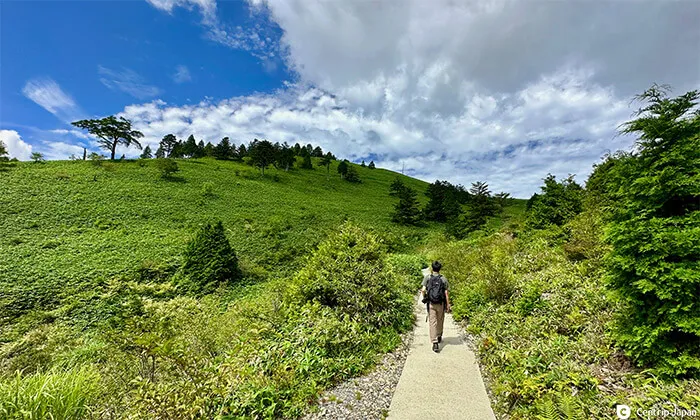 The first part of the trail consists of a well-maintained promenade.
The first part of the trail consists of a well-maintained promenade.
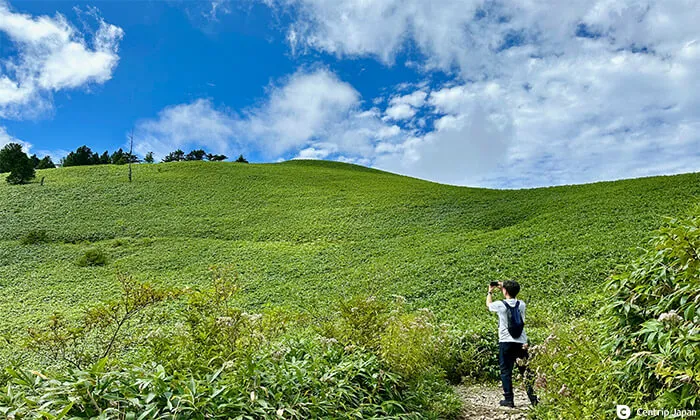 Every view is picture-perfect, no matter where you look.
Every view is picture-perfect, no matter where you look.
After enjoying the scenery from the bus window for approximately 20 minutes, you'll arrive at the Bangakuso bus stop. From here, it's time to relish a hike of about 1.1 kilometers, taking approximately 30 to 40 minutes to reach the summit. The contrast between the lush green mountainside and the clear blue sky is truly photogenic from any perspective!
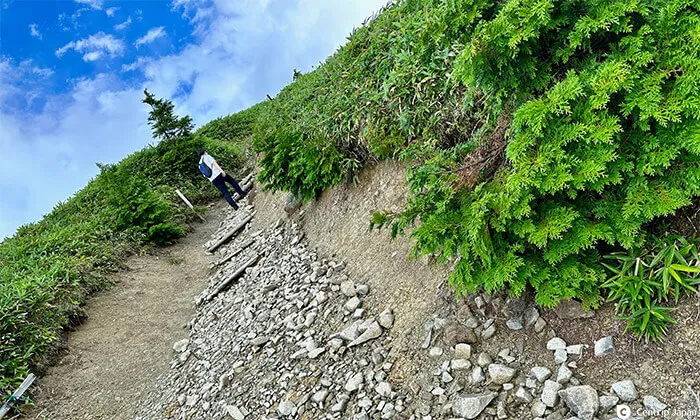 While there are a few slightly steep sections, the footing is not overly
challenging.
While there are a few slightly steep sections, the footing is not overly
challenging.
 The mid-trail emergency shelter also provides restroom facilities.
The mid-trail emergency shelter also provides restroom facilities.
The first part of the trail is a well-maintained promenade, transitioning to a gravel path in the latter half. However, the footing is not particularly treacherous, so as long as you wear comfortable shoes suitable for walking, specialized hiking boots are not necessary to complete the climb.
 Ascending towards the boundless blue sky feels incredibly refreshing.
Ascending towards the boundless blue sky feels incredibly refreshing.
Beneath the delightful azure sky, as you admire the panoramic views unfolding on both sides of the ridge and indulge in capturing photographs to your heart's content, you'll find the summit coming closer in no time.
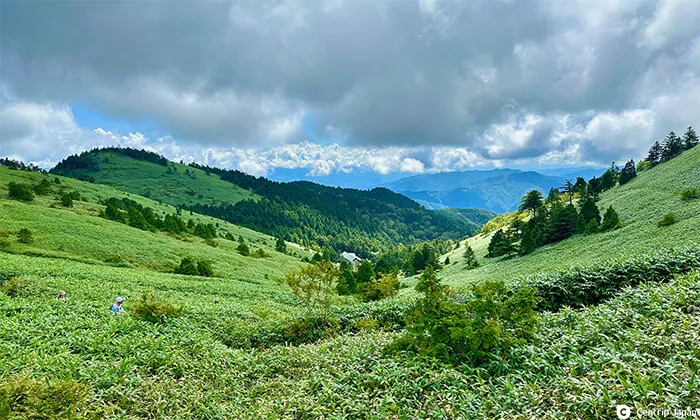 To the right, you'll catch a glimpse of Bangakuso, the starting point, appearing
diminutive.
To the right, you'll catch a glimpse of Bangakuso, the starting point, appearing
diminutive.
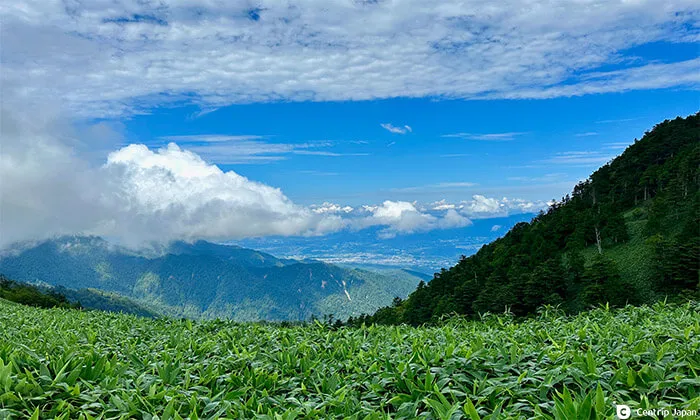 To the left, you'll spot the town nestled below the clouds.
To the left, you'll spot the town nestled below the clouds.
This is the extraordinary view from near the summit of the Fujimi-dai Kogen! The way a single path stretches towards the summit amidst the green carpet resembles a scene from a movie (unfortunately, there were some clouds around the summit on the day of our coverage, but the view remained awe-inspiring).
 Just a little further towards the summit!
Just a little further towards the summit!
The summit opens up to a spacious area, where you may find people enjoying their packed lunches. If the weather is favorable, the summit offers an expansive 360-degree panorama, treating you to the vistas of renowned Japanese mountains like Mt. Ibuki, Mt. Ontake, the Southern Japanese Alps, and Mt. Yatsugatake.
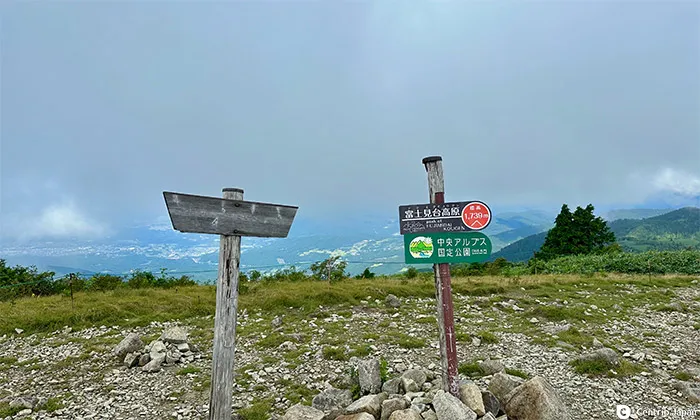 The summit proudly stands at an elevation of 1,739 meters.
The summit proudly stands at an elevation of 1,739 meters.
 Savor the views of Japan's representative mountains (or at least that's what we
anticipated).
Savor the views of Japan's representative mountains (or at least that's what we
anticipated).
After taking a well-deserved break at the summit, let's descend back to Bangakuso following the same route. Including rest time, the round trip takes about 90 to 120 minutes of mountain hiking.
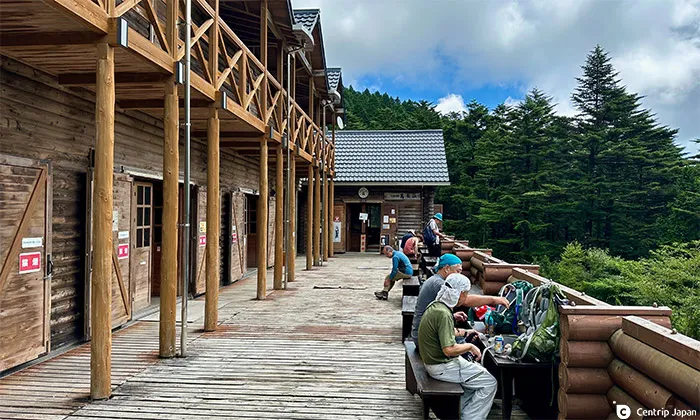 Terrace on the 2nd floor of Bangakuso
Terrace on the 2nd floor of Bangakuso
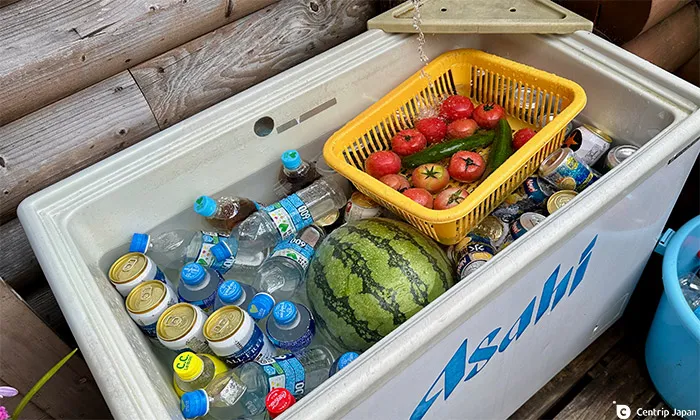 Chilled drinks and watermelons that are simply irresistible on hot days?
Chilled drinks and watermelons that are simply irresistible on hot days?
The 2nd-floor terrace of Bangakuso serves as a wonderful resting space. During the summer, you can find a refreshing selection of soft drinks, beer, perfectly chilled vegetables, and watermelons available for purchase. Since the Highland Bus stops right below, we took the opportunity to relax until our bus arrived.
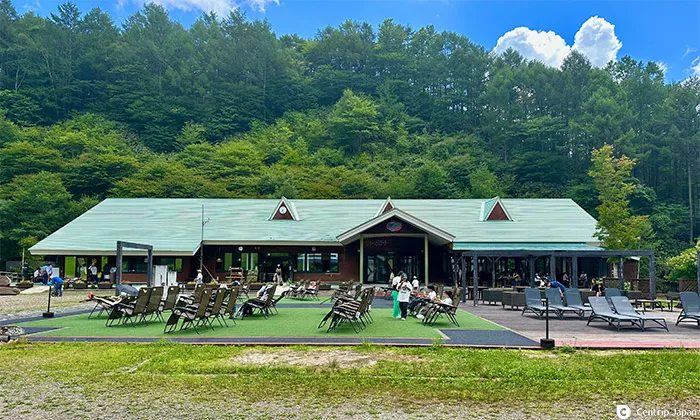 Center House Restaurant
Center House Restaurant
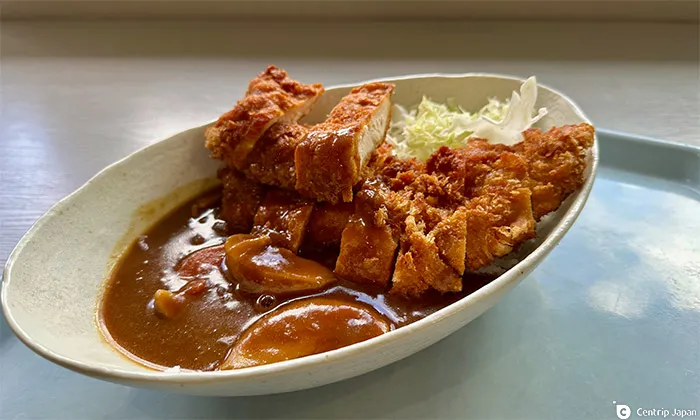 A satisfying lunch after a rewarding hike
A satisfying lunch after a rewarding hike
After a hike, we highly recommend the Center House Restaurant located at the midway point of the lift. The menu offers a wide range of options, including rice dishes like curry and rice and katsu-don(deep-fried pork cutlet on rice), as well as noodle dishes like soba and ramen. The desserts, such as soft-serve ice cream, are also quite popular. With outdoor terrace seating available, you can leisurely unwind, enjoy the picturesque views, and soothe your hiking fatigue.
Wrap-up
Explore a charming town that feels like a journey back in time to the Edo period, witness Japan's most breathtaking starry skies, experience a stay at a tranquil hot spring inn, and embark on awe-inspiring hikes amidst pristine nature. Why not plan a visit to Achi Village, where the allure of traveling in Japan is beautifully encapsulated?

